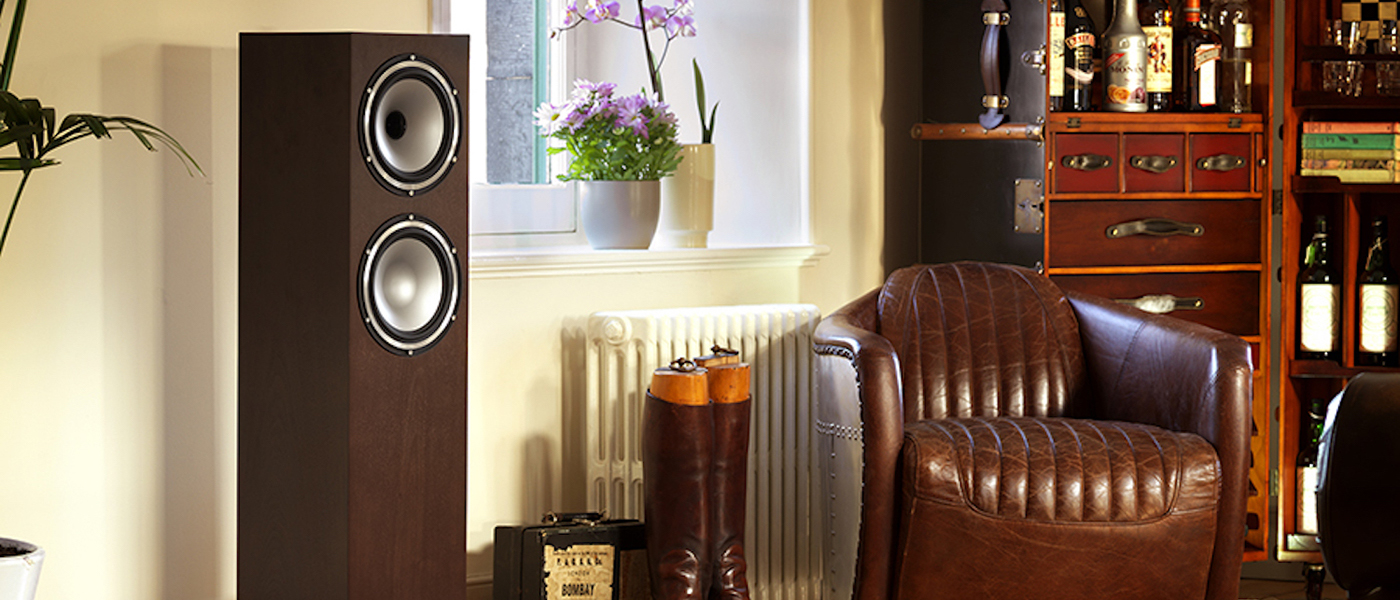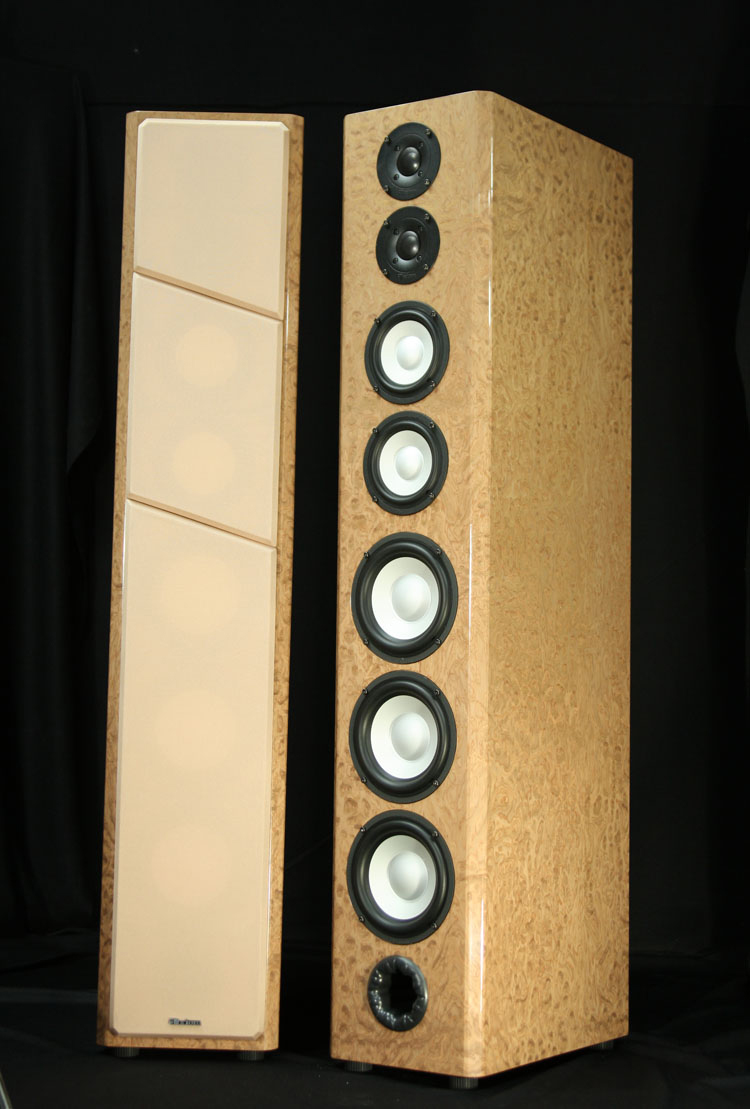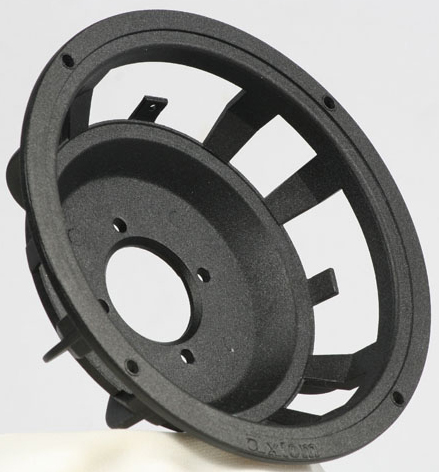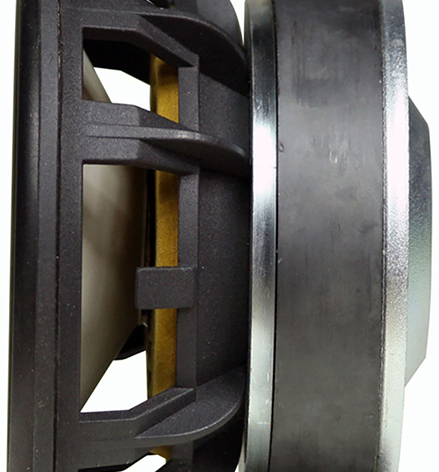Axiom even allows the customer to personalize each new pair of speakers with a “Custom Made for…” plate. Imagine the fun you could have with that!
The Version 4 Axiom M100s offer cast-basket drivers with aluminum cones that have been designed for long excursion and good heat management, ensuring that the sound doesn’t change at high volumes (as the voice coils warm up). These speakers impressed me from the beginning with a very accurate rendering of all the music that I threw at them. They also provide the owner some of the nicest cabinetwork I’ve seen.
Axiom M100 Floor-standing Speakers Review
- Available in many different vinyl or wood finishes
- Extremely articulate and detailed sound
- Tuneable bass
- Customizable options for spikes, outriggers and wire connections
- High power handling
In its 34 year history, Axiom Audio has made a reputation for achieving high performance while keeping prices reasonable. Their direct-sales model via the Internet helps maintain this advantage.
At inception, Axiom Audio’s founder Ian Colquhoun benefitted from work at the National Research Council Lab in Ottawa, Canada under the direction of Dr. Floyd Toole. Those theories and methodologies helped Canadian audio and speaker design gain a good reputation, which Ian and his company help maintain.
DESIGN:
7-Driver, 3-Way Floor-standing Speakers in Ported, Floor-standing Tower Cabinets
DRIVERS:
Dual 1” Titanium Tweeters in Aluminum Flared Faces, Dual 5.25″ Aluminum Midrange, Triple 6.5″ Long-throw Aluminum-cone Woofers with Cast Baskets
FREQUENCY RESPONSE:
31 Hz – 20 kHz, ± 3 dB
ENCLOSURE:
Triple-Vortex Vented Reflex Tower
CROSSOVER FREQUENCIES:
160 Hz, 2.3 KHz
SENSITIVITY:
(88dB @ 1W @ 1 M) – Anechoic
NOMINAL IMPEDANCE:
4 Ohms
RECOMMENDED AMPLIFIER POWER:
10 to 400 watts
INPUTS:
1 or 2 Pairs of Gold-plated Binding Posts (Customer Choice)
DIMENSIONS:
47.5″ H x 9.25″ W x 17″ D
WEIGHT:
70 Pounds/each
CUSTOM FINISHES:
Vinyl finishes (no additional cost) – Black Oak, Boston Cherry, Eggshell White, Russian Maple, Vermont Maple, Charcoal Smoke, Brushed Silver, Ebony, Warm Cherrywood, Cinnamon Beech, Heartland Maple, Paintable Finish
Vinyl finishes (+$40) – Magenta High Gloss
Wood Finishes (+$640) – Knotty Pine, Walnut, Oak, Cherry, Maple
Wood Finishes (+$1,080) – Rosewood
Wood gloss finishes (any wood above) – Satin Low Gloss, Semi Gloss – no additional cost
High Gloss wood finish (+$505.60)
Solid High Gloss finishes (+$1,145.60) – Piano Black, Gloss White
CUSTOM GRILLES:
Solid Color – Black, White, Textured Tan, Tan, Sienna, Textured Black
Multi-colored – (+$60) Any Combination of Above (m100 uses Three Separate Grilles)
CUSTOM HARDWARE:
(No Extra Charge) – Standard Feet, Custom Black Spikes
(+$240) – Outriggers, Outriggers and Black Spikes
CUSTOM INPUT SELECTION:
(No Extra Charge) Choice of Single or Bi-wire Gold-plated Five-way Terminals
CUSTOM SPEAKER LABEL:
(No Extra Charge) Choice of Standard or “custom Made For…” Labels
MSRP:
$2,790/pair USD with Free Shipping from Canada (No Import Duty Fees)
WARRANTY:
5 Years with 30-day Full-refund Return Policy
Company:
SECRETS Tags:
Axiom Audio, M100, Floor-standing Speakers, Main Speakers, Full Range Speaker, Axiom Drivers. Multi Driver Design, Ported Towers
Axiom is a recognized name among audio aficionados. With the emergence of Internet marketing, Axiom’s value-for-the-money reputation has become more widely known.
Axiom now produces eight-sided seamless cabinets with an anti-standing wave wedge-shaped design and low-distortion vortex porting. They use computer design and manufacturing (CAD/CAM) to achieve consistency in their products. Their offices and manufacturing facilities are situated in the Muskoka district of Ontario, Canada.
I have previously owned Axiom’s M80 speakers. Based on their outstanding performance and value, I decided to use their generous trade-in program to try the top-of-the-line M100s. The main difference between the two is in the construction of the woofers. The old woofers used stamped steel baskets with less excursion and lower power handling. The new models have cast aluminum baskets for better rigidity and heat dissipation.
Version 3 woofer:
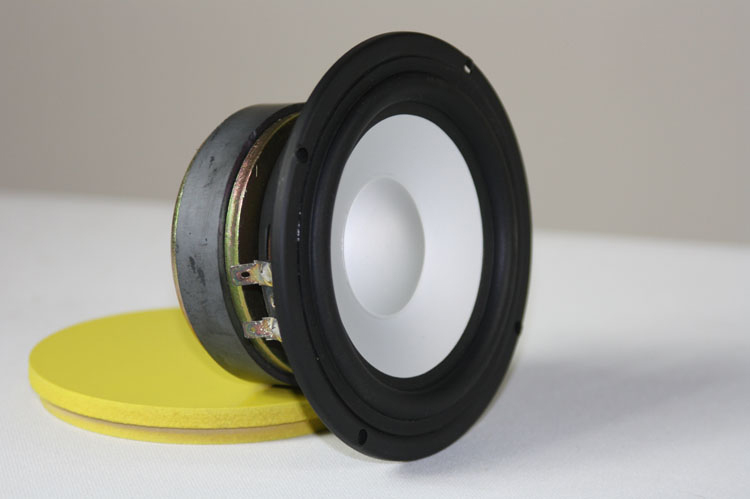
Version 4 woofer, Version 4 cast woofer basket and Version 4 woofer magnet:
The Version 4 tweeter uses a new faceplate design with a re-designed horn for more uniform off-axis dispersion.
Version 3 tweeter:
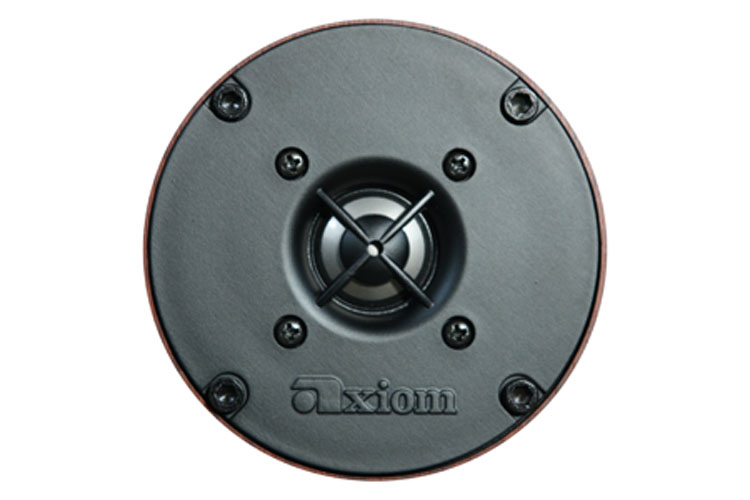
Version 4 tweeter:

The new crossovers have been refined to achieve an optimal family of curves. This series of on and off-axis curves make up the entire sound field produced by the loudspeaker and are an excellent indicator of how it will perform and interact with a typical listening environment.
Secrets Sponsor
Axiom uses the combination of on-axis and off-axis frequency response curves to voice their speakers. And they employ measured response as well as double-blind listening test in a variety of environments. Wide dispersion with a consistent and gradual transition from on-axis to off-axis response is the goal. Axiom’s crossover design philosophy is not beholden to any particular order or topology. Instead, they claim to use any type and slope that provides the most uniform off-axis curve.
Version 4 crossover:
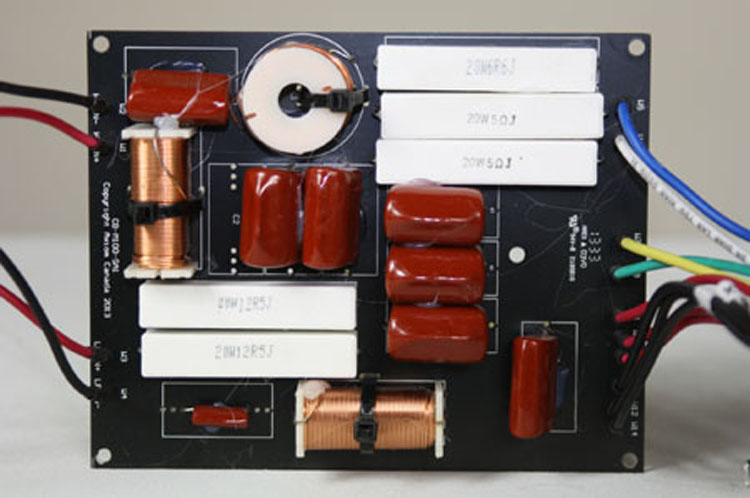
Note the use of film capacitors rather than non-polarized electrolytics.
Additionally, the M100 models have three woofers while the older M80s had but two. The M80 model remains in Axiom’s line (but now with the new woofers, tweeters, & crossovers).
The vortex port looks as if movie director David Cronenberg designed it! The wrinkled surface is intended to reduce air turbulence at high listening levels to prevent audible chuffing.
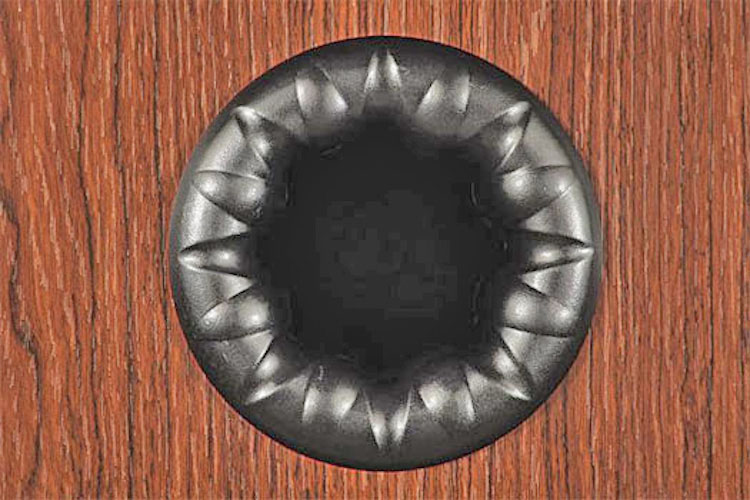
Axiom offers foam plugs designed to fit their vortex ports. There are no hard and fast rules as to when or how many plugs should be used as it is very room-dependent. The addition of each plug serves to reduce the system tuning frequency, and hence soften the knee – the frequency where the system begins to naturally roll-off. This can be beneficial in setups where the speakers need to be close to the back or sidewall, or up against cabinetry or equipment racks. Each additional port plug further dampens the roll-off and reduces the amount of low frequency energy put into the room.
Secrets Sponsor
Axiom also claims that their loudspeakers should not create any spurious sounds such as driver bottoming, port chuffing, or buzzes and rattles. Designs are checked by rigorous measurements and double-blind listening tests.
Axiom also offers customers the choice of single or double connecting posts for those who wish to bi-amp or bi-wire their speakers.
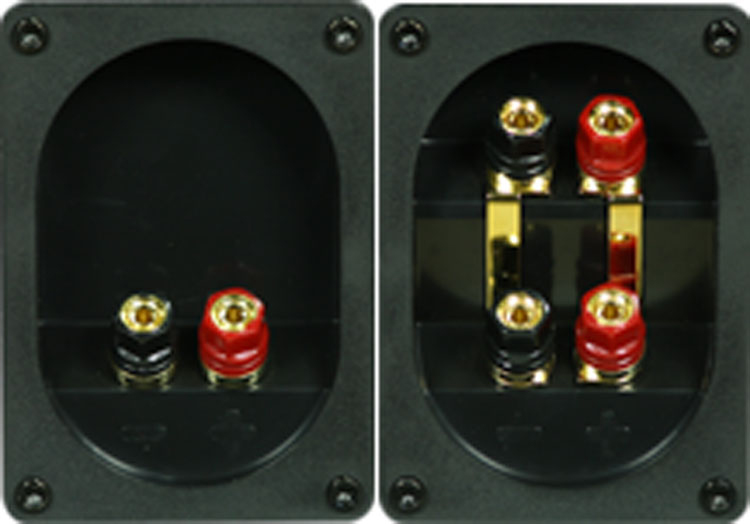
Axiom’s double-blind listening tests have found no conclusive benefit of bi-wiring. But since some customers strongly believe in this requirement, Axiom offers it as a no-cost option.
The M100s arrived in well-designed custom packing and boxes. They are heavy enough that an assistant is useful for unpacking. I ordered my speakers in Heartland Maple vinyl finish and my first impression on opening the boxes was that Axiom had mistakenly sent me real wood-veneer. Closer inspection revealed that the finish was truly vinyl not wood, but my mistake indicates the very high quality of the wrap and its application.
My speakers were ordered with the bi-wire terminals, and I used the outriggers from my M80s (interchangeable with the M100s) with threaded feet. The majority of my listening was done without the grilles on. The magnetic grilles are easy to remove and replace without danger of breaking the grille sockets & plugs (since there are none). Would that all manufacturers used magnetic grilles!
That said, the angled three-piece grilles of the M100s are not my cup of tea from an aesthetic standpoint. Although it is convenient to be able to remove any part of the grille independently (bass, midrange, or treble), the slanted design is different from any other manufacturer’s. The mirror imaging of the grilles may provide some acoustic benefit. Maybe it’ll grow on me…
The M100 sports three vertically aligned woofers topped by two vertically aligned midranges and a pair of (you guessed it) vertically aligned tweeters. This provides something of a line source effect due to driver frequency overlaps. The speaker has wide horizontal dispersion, and limited vertical dispersion.
In most rooms, this line source effect, combined with the narrow cabinet, should provide excellent imaging. And so it turned out in my room. Despite the slight right to left asymmetry of my room, the M100s provide both a wide and deep soundstage.
I must also mention that the M100s imaging is sufficiently precise to use monophonic, but out-of-phase signals as a means for positioning the speakers in the room. The Stereophile test CDs offer a phasing track, but if you don’t own the CDs, similar tracks are available on YouTube: www.youtube.com/watch?v=H-kxtKGR2vY
The way this should work is that out-of-phase material should provide beyond the speakers imaging that is equally distinct on both the right and left sides. If the image appears on one side only (or is stronger on one side only) then move BOTH speakers toward the stronger-image side. Then repeat the out of phase test and continue making adjustments until the images are equally loud on both sides. This test takes into account the speakers’ positioning in the room, and should assure balanced imaging.
When my speakers were in their initial position the out-of-phase-test yielded a strong image beyond the left speaker but no corresponding image beyond the right. I moved both speakers three feet to the left. Now I got a strong image beyond the right speaker, but no corresponding image beyond the left. I moved both speakers six inches back to the right. Now I got a strong image beyond the left speaker, and a weaker image beyond the right. I moved both speakers three inches to the left. Now I got equally strong images to the outside of both speakers. Done!
This is simple. It works with any speakers in any listening room. It sounds fantastic. And it isn’t hard to tell the difference. The out-of-phase test is the best tool I’ve found for balancing the speakers to their room!
One of the neatest things about the M100s in my opinion is their placement flexibility. Axiom thoughtfully provides a series of three foam port plugs. The closer the speakers are placed to the rear wall, the larger the number of port plugs that should be used. By using them, the speakers are adjusted for the acoustic boundary reinforcement of the back wall. Normally, as speakers are moved closer to a wall, their bass becomes more prominent, often becoming boomy. But with the plugs, the M100s can be tuned to the room and can be used either close to a rear wall or in free space.
This flexibility allows the use of the M100s in multi-purpose rooms where sometimes the speakers MUST be placed in close proximity to a wall. The plugs also allow for tuning of the bass when the speakers are used with a subwoofer. Although some experimentation is necessary to get the ideal balance (No plugs? One? Two? All?), the results are worth it!
The M100’s design is intended to allow high-volume full-range audio reproduction without the need for a subwoofer. The speaker has a -3dB roll off point of 31Hz, which is sufficient for 99.9% of recorded music. If you’re an organ aficionado or a fan of DJ Magic Mike then a subwoofer or two will be needed. But for most music the bass is more than satisfying.
I listened to the M100s both with and without my two PowerSound Audio XV-15 subwoofers. With the M100s in close proximity to the back wall there was little difference. But with the M100s moved further into the room (where they image better), the subs did improve the bass. That being said, my room is about 26 x 15 feet; for smaller spaces I believe that the M100s alone would be more than sufficient. The listening portion of this review was done without my subs unless otherwise specified.
I used the M100s with a wide variety of amplifiers including four Emotiva XPA-1L Class-A mono blocks, an Emotiva XPA-2 Generation two stereo amplifier, a Hegel H80 integrated amplifier, a Yaqin VK-2100 tube/solid-state hybrid integrated amplifier and a variety of preamplifiers including two solid state preamplifiers and the McIntosh C220 vacuum tube preamp.

The speakers were of sufficient resolution that I could easily hear differences in the associated amplifiers and preamps. I listened to the speakers both with the terminal jumpers installed and with bi-wiring. Although I couldn’t hear differences between single and bi-wiring of the speakers, some say they can.
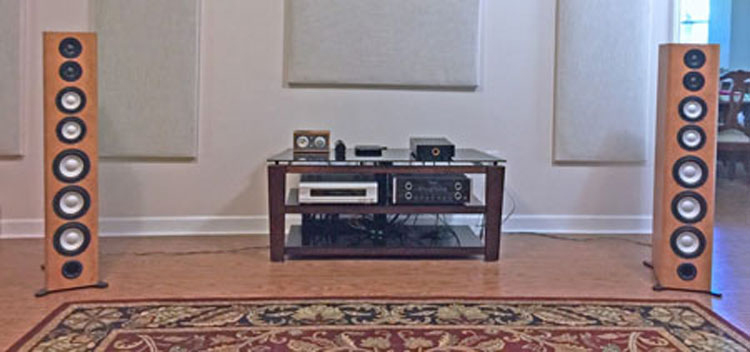
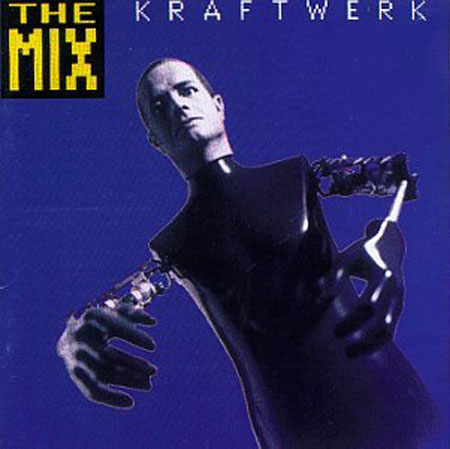
I enjoy many kinds of music, but one of my favorite genres is Electronica. One of the first cuts I played with my M100s was Radioactivity by Kraftwerk from their CD, The Mix.
With the M100s against the back wall (port plugs in), the bass was adequate to underpin the ethereal vocals and Morse-code beeps; but with the speakers away from the wall (port plugs out), the visceral effects of the bass went missing. The best mix I got (pardon the pun) was with the subs engaged and the speakers about three feet away from the back wall with the port plugs in.
This combo provided a completely free-floating soundstage where the speaker positions couldn’t be identified by ear and the bass was given proper weight in the soundstage. One of my audio friends calls the free-floating soundstage the “wraparound effect.” And he’s right. When the speakers are well placed, the listener feels surrounded by the acoustic.
Remaining with the Electronica theme, I then queued up Don Dorsey’s Toccata & Fugue in D Minor from his BachBusters CD.
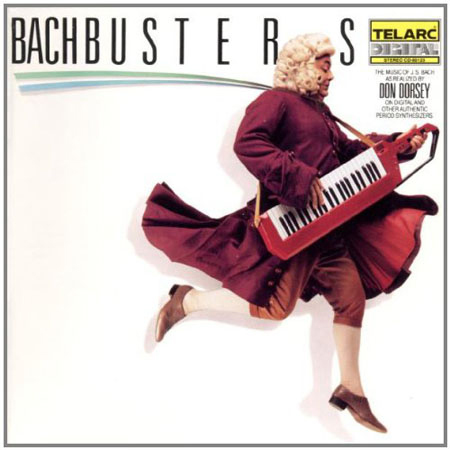
This whimsical electronic take on J.S. Bach’s most famous creation offers true sub-sonic (below 20Hz) content. Although the M100s are not designed to reach that low, I wanted to see if strong, out of pass-band signals would muddy the bass or midrange reproduction of the speakers. It didn’t!
Despite being far below the frequency where the M100’s woofers are loaded by their ports, I saw no cone flapping. Such uncontrolled movement can cause not only high intermodulation distortion but also in extreme cases, woofer damage. To the Axioms’ credit, they sounded clean with no evidence of distress even with ultra-low frequencies present at high volumes.
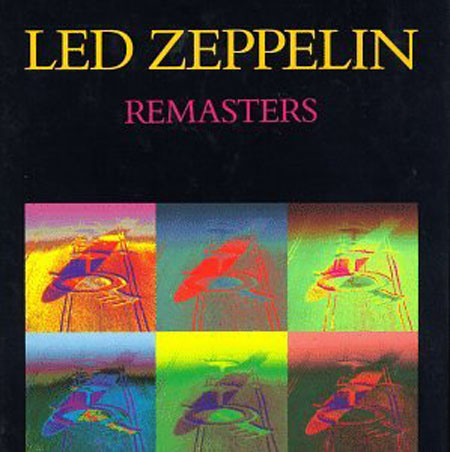
My next experiment was to listen to some old favorites – Stairway to Heaven and Ramble On by Led Zeppelin.
The guitar work should shimmer and sound very much in the room with you. With the M100s it did. When the music transitions from acoustic to electric it should sound cataclysmic. It did!
The M100s provided as realistic a presentation as I’ve ever heard of this music save at a live concert. The dynamic swings from very (very) soft to bombastic were preserved perfectly. When dynamic range is required, the M100s have the ability to deliver.
Dynamic range is not a trivial aspect of music. Most speakers compress dynamic range. The only exceptions that I’ve heard are Klipschorns. Loudspeaker compression becomes far more prominent at high volumes. Most speakers when played loudly subside into an undifferentiated loud roar. The Axioms do better than most loudspeakers I’ve heard. Perhaps it’s an artifact of the larger cone area provided by the multiple drivers, or perhaps it’s an artifact of the lower transient intermodulation (TIM) distortion enabled by that cone area, but the Axioms can play LOUDLY without losing too much in the way of dynamics.
Although I’m not one to normally play at louder levels, the Axioms can do so (and even without the subwoofers) in a way that is nice to have. There’s not a bookshelf speaker in the world that I’ve ever heard, regardless of price that can produce the dynamics of the M100. There are a few tower speakers that can keep up, but they cost more.

Next, I went to one of my favorite classical pieces – Beethoven’s Pastoral Symphony No. 6 played by Christopher Hogwood and the Academy of Ancient Music.
The purity of the vintage instruments was clearly audible with excellent separation and bloom. Of the several recordings I have of this symphony, the Hogwood version is my favorite. I’ve played it for a number of my friends and it’s one of my favorite things to give them for birthdays and Christmas. The quality of the recording is exceptional and the cello lines are particularly clean and distinct against the background.
Here the M100s’ balance reminded me strongly of Thiel speakers that I’ve previously owned (including the 1.5s and 3.6s). There is no emphasis on any specific part of the spectrum but rather a smooth and very balanced reproduction of the lowest bass up to the highest treble (or whatever portion of that is within the speaker’s bandwidth). The Thiels additionally focus on being phase-coherent and although Axiom makes no similar claims for their speakers, the in-room sound of the Axioms is closer to Thiel’s than any other speaker I’ve tried.
There are other similarities between the Thiels and the Axioms as well. Both are nominally four-ohm speakers. This has the potential to put more stress on the amplifier but the Axioms are easier to drive because of their simpler crossovers and smoother impedance curves.
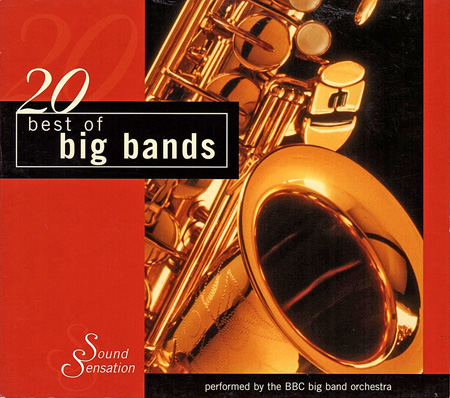
Finally I put on a pair of jazz discs, both of which have lots to offer the listener. The first disc is by the BBC Big Band doing one of the best versions I’ve heard of Sing, Sing, Sing
This track offers percussion & more percussion! The horns should sound brash and blatty – through the Axiom M100s they can pin your ears back! The drums (and the kettle drums in particular) should sound taut enough that you can hear the mallet strike the head – and with the Axioms no detail is lost. I’d also mention that this is a track best played with higher than normal volume. The Axiom speakers never showed distress even when pushed. What fun!

My second jazz selection is more obscure but no less of a treat. “Big Luther” Kent is a South Louisiana phenomenon who has been around since before I first heard him live at my university’s freshman mixer. I won’t say how long ago that was but it provided an intro to Luther’s band Cold Gritz and Blackeyed Peas fronted by Mr. Kent himself. This recording shows he still has his chops.
Cut number two, Bye Bye Blackbird, has dynamics to spare. The horns and drums should be alive – as if you’re sitting in a New Orleans club listening to the performance. That’s the impression I get with the Axiom M100 speakers. The saxophone and drum dynamics accent the liveness of the performance.
There’s an ability that we all have to recognize live versus recorded music. You can be walking down a street with all the attendant echoes of traffic and city sounds and hear music from a block over. Your mind knows instantly whether the music is live or a recording. No question – instant recognition.
The Axiom M100s can make music sound live in a normal-sized listening room. In an outdoor venue the cone-area limitations of the Axiom’s woofers would quickly become apparent. They’d run out of excursion, distort more and ruin the illusion. But in a home listening room environment they can be something surprising.
Since I lack acoustic test equipment I’ve taken the liberty of reproducing Axiom’s frequency and impedance graphs below:
Frequency:

Impedance:
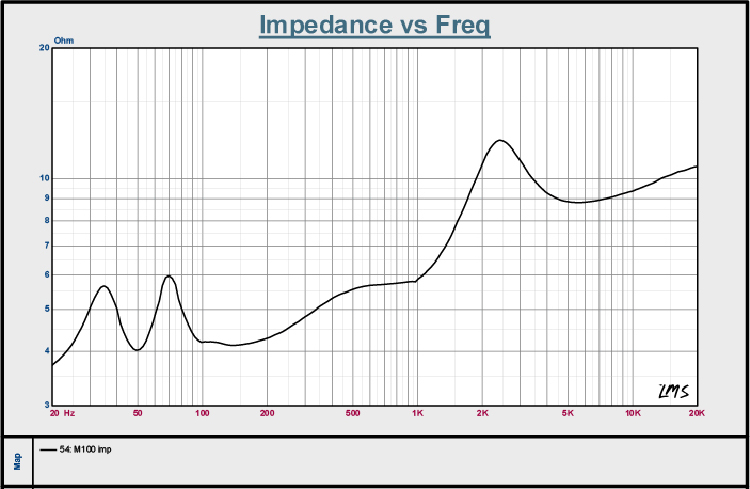
The impedance is of particular note. The fact that the impedance remains above four ohms for the entire audio band (ignoring the tail below 20 Hz.) means that the M100s should be an easy drive, even for AV receivers (not normally known for their four-ohm performance).
Now that said, if you’re the person who likes high volumes and/or you have an auditorium-sized listening room, your AVR will certainly NOT be sufficient. Plan on adding a more muscular amplifier. High-quality, high-powered amplifiers are now becoming affordable commodities and any improvement in amplification will absolutely be audible with the M100s.
My favorite amp turned out to be the Emotiva XPA-2, Generation 2. This amp has sufficient power to bring out the best of the M100s at higher volumes yet maintains dynamics and tone when playing at much softer normal volumes.
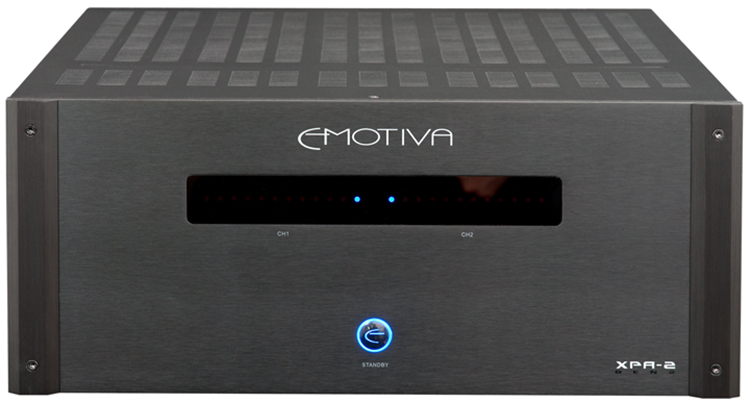
I did run the M100s for a time using the Yamaha RX-A3050 Aventage receiver. The Yamaha did a fine job driving them but the receiver I reviewed (see review here, LINK) is Yamaha’s flagship with power capability beyond the usual AVR.
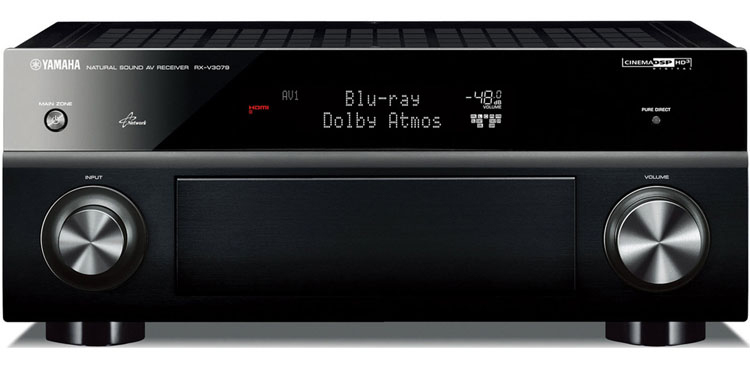
Although I’m fond of separates I found that high-quality integrated amplifiers also have sufficient power to run the M100s happily. The two that I tried, the Hegel H-80 and the tube-hybrid Yaqin VK-2100, both sounded wonderful with the M100s.

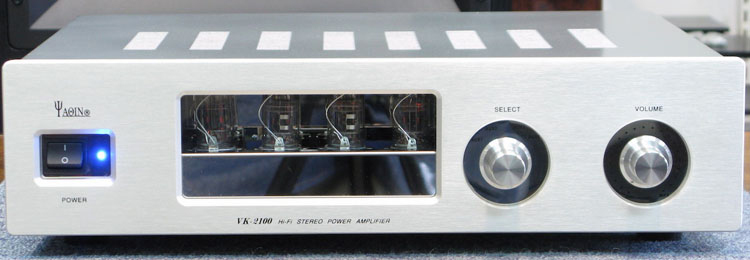
The first, and most obvious comparison to be made is between my new M100s and my previous Axiom M80s. The resemblance is very close, as you might expect from two products in the same family from the same manufacturer. The major difference is in the bass. The M100’s is clearer and has the ability to play much louder. If you have a large room or like to play music at loud levels, the choice of the M100 over the M80 is a no-brainer. However for smaller rooms, or if you play music at softer levels, or if you use the crossover of your receiver to route bass to a subwoofer, then the M80 is the better (and far less expensive) choice.
The most recent non-Axiom speaker that I’ve heard in my home in the M100’s quality range has been the Magnepan 1.6. They use completely different technology and have a radically different radiation pattern. The Maggies could sound more expansive with their sound stage (as might be expected with a dipole radiator) but lacked the Axiom’s more precise imaging. The Axioms also have an extra octave of bass that the Magnepans lack. If precise imaging and bass extension are important to you then the Axiom is worth the extra money. Otherwise the Magnepan is also an excellent choice.
I’m also drawn back to comparisons with my previous Thiel speakers. The Axioms I would characterize as more dynamic Thiels. Yes the Axioms lack the phase coherence of the Thiel designs (that can sometimes be audibly beneficial) but overall if you like Thiel sound, I can’t imagine you won’t like Axiom’s as well.
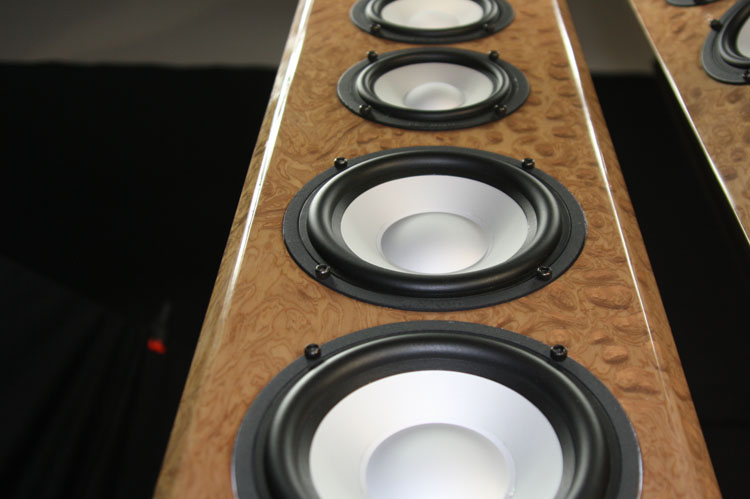
THE AXIOM M100 FLOOR-STANDING SPEAKERS Offer High Volume, Trade-in Upgrades and Tunable Bass in a Single Well-designed Package.
- Wonderful imaging
- Good dynamics
- Tuneable bass
- Gorgeous finish (vinyl or wood)
- Friendly customer service
- 10 more Hz. Of bass extension
- Larger woofers
- Less expensive wood veneers
To the best of my knowledge, their nearest competition would be the Thiel 3.7 at more than four times the cost. Therefore on a performance per dollar basis, I consider the Axioms stone cold winners!
The $3K price point is a crowded one. Many excellent speakers are available in this range and I’ve not heard enough of them to give a fair comparative ranking between Axiom’s M100 and its competition. Revel, Salk, B&W, Magnepan and many others provide a wide variety of competitive speakers that (I’m sure) each have their own strengths and weaknesses.
Were I in the market for speakers at the $3000 per pair price range though, I’d consider the Axiom M100s to be a must audition product. One can return the speakers if they’re not your first choice but after hearing mine, I wasn’t going to let them go!
Another Axiom advantage is that since Axiom is located in Canada there is no local tax due. But on the downside, ordering real wood or glossy finishes for your Axioms can easily make the M100s into a $4K+ pair of speakers. At that price point the competition is much stouter. Though I consider the M100s a bargain at $3K, I think I’d have to spend significantly more time listening to other options before I spent $4K+ on the same pair of speakers.
-Glenn Young


